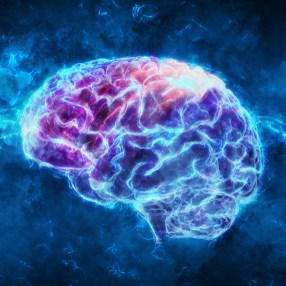This is the first in a series of articles that will address cognitive errors in clinical diagnosis. Logical reasoning and sound decision-making are cornerstones of clinical care and are essential to preventing adverse events that arise from incorrect, missed, or delayed diagnoses. Each year, diagnostic errors lead to approximately 27,000 hospital admissions and more than 150,000 cases of patient harm.1 Up to 80% of adverse events related to misdiagnosis are judged to be preventable. Most diagnostic errors have a cognitive element, arising when biases alter the clinician’s thoughts and impact their judgment.2
Biases, or cognitive errors, are flaws in clinical reasoning, where the clinician unconsciously makes decisions based on intuitive judgments rather than analytical thinking. According to the dual processing theory of human cognition, reasoning and decision-making involve both an intuitive process, which relies on past experience and pattern recognition, is fast, and is prone to error, and an analytical process, which is more deliberate, slower, and requires more effort but is less vulnerable to error.3 Intuitive thinking is the default process for humans because it saves time and energy and often results in acceptable decisions in daily life. When problem solving, however, analytic thinking is more effective and less likely to result in error. Knowing the cognitive errors inherent to intuitive thinking can help clinicians recognize them when they arise in clinical decision-making. There are more than 100 cognitive biases, and many of them overlap or occur together.3 This article discusses two cognitive errors: anchoring and confirmation bias.
CASE
Urgent Care Visit
A 42-year-old man presents to an urgent care clinic at 7 AM with a severe headache accompanied by nausea, two episodes of vomiting, and dizziness that developed suddenly approximately 3 hours ago while he was at work. The headache is located in the left frontal area, is moderate in severity, and has not responded to over-the-counter pain relievers, including NSAIDs and acetaminophen. He reports a history of migraine headaches, which he first experienced during college, starting around age 18, and last experienced in his late 30s. During migraine episodes, he usually experiences sensitivity to light and nausea but not vomiting, and the headaches respond to ibuprofen taken at the onset of symptoms. He has a history of obesity (body mass index, 32.5) and hypertension, which is being treated with lisinopril 20 mg daily. There is a positive family history of migraine, cerebrovascular disease, and stroke at a young age. The results of the physical examination include: temperature, 36.2°C (97.2°F), heart rate, 69 beats/min, respiration, 22 breaths/min, and blood pressure, 127/82 mm Hg. Upon questioning, the patient notes that his migraines are triggered by stress, lack of sleep, and alcohol. He is employed as a manager at a shipping warehouse, where he works a 12-hour night shift for four days followed by three days off. He reports that over the past month he has been working additional hours and feeling stressed due to an increased workload. He typically drinks one to two 12-oz beers per week and denies a recent increase in alcohol intake.
His neurologic examination is within normal limits except for mild photophobia and phonophobia. He is diagnosed with migraine headache and is prescribed oral sumatriptan and naproxen and is advised to contact the practice if the head ache worsens or does not respond to the newly prescribed therapy.
Emergency Department Visit
The following morning, the patient is brought to the emergency department with sudden left-sided weakness and imbalance along with facial drop and slurred speech. His wife reports these signs and symptoms were present when the patient awoke. She also notes that the sumatriptan and naproxen led to moderate improvement of his nausea but with minimal effect on his headache. Neurological examination reveals left hemiataxia and gait ataxia. MRI reveals acute ischemic infarct in the area of the left superior cerebellar artery.
Cognitive Errors and Biases Discussion
In this case, the clinician settled on a specific diagnosis of migraine based on their initial impression of the patient’s presentation and did not modify their thinking as new data became available. Specifically, after reporting a history of migraine, the patient describes headache features that differ from his usual headache, including vomiting and lack of response to an NSAID taken at headache onset. This cognitive error is termed anchoring, and it often occurs with and is compounded by confirmation bias, which is the tendency to selectively seek information that supports initial impressions.1 With anchoring bias, the clinician maintains their first impression in the absence of supporting evidence, which can lead to misdiagnosis or a delay in arriving at the correct diagnosis. In such situations, delays in diagnosis are extended by confirmation bias, where evaluation focuses on confirming the initial impression while failing to test for alternative diagnoses. The patient is young, normotensive, and has nonspecific symptoms of headache, nausea, and vomiting, as well as a history of migraine headache, leading the clinician to pursue a diagnosis of migraine over stroke. While the patient’s report of experiencing increased stress, a migraine trigger for him, supports this diagnosis, the family history of stroke at a young age as well as the differences between this headache and his usual headache should have led the clinician to consider stroke in this patient.
Preventing Common Cognitive Errors
Clinicians can reduce the tendency to “anchor” on a diagnosis by accepting uncertainty, seeking information to refute the initial impression, and reassessing patients when the clinical exam does not correlate with the clinical findings, including laboratory and imaging results, or the patient does not respond adequately to initial treatment.






